Bucatini pasta, with its long, hollow shape resembling thick spaghetti, is a popular and versatile pasta that has been enjoyed by pasta lovers for generations.
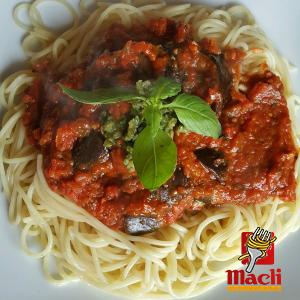
.
 Its name comes from the Italian word “bucato,” which means “pierced” or “holed,” referring to the hollow center of the pasta strands. This unique shape not only makes bucchini a standout among pasta varieties but also influences the way it absorbs sauces and enhances the overall dining experience. One of the key attributes that sets bucchini pasta apart from other types is its ability to trap and hold sauce within its hollow center. When cooked al dente, the texture of bucchini offers a delightful chewiness while the hollow center captures the flavors of the sauce, resulting in a harmonious blend of textures and tastes in every bite. The thickness of bucchini pasta provides a substantial presence on the plate, making it an ideal canvas for a wide range of sauces, from simple olive oil and garlic to hearty meat-based ragu. Bucatini pasta is a versatile ingredient that pairs well with various types of sauces, meats, vegetables, and cheeses, making it a versatile staple in any kitchen. Its sturdy texture holds up well in baked pasta dishes such as baked ziti or pasta al forno, where the pasta is layered with sauce and cheese before being baked to perfection in the oven. The hollow center of bucchini pasta also makes it an excellent choice for sauces with chunky ingredients, as the sauce clings to the pasta strands and gets trapped within the center for a burst of flavor in every bite. In addition to its culinary versatility, bucchini pasta is also a popular choice for classic Italian dishes that have stood the test of time.
Its name comes from the Italian word “bucato,” which means “pierced” or “holed,” referring to the hollow center of the pasta strands. This unique shape not only makes bucchini a standout among pasta varieties but also influences the way it absorbs sauces and enhances the overall dining experience. One of the key attributes that sets bucchini pasta apart from other types is its ability to trap and hold sauce within its hollow center. When cooked al dente, the texture of bucchini offers a delightful chewiness while the hollow center captures the flavors of the sauce, resulting in a harmonious blend of textures and tastes in every bite. The thickness of bucchini pasta provides a substantial presence on the plate, making it an ideal canvas for a wide range of sauces, from simple olive oil and garlic to hearty meat-based ragu. Bucatini pasta is a versatile ingredient that pairs well with various types of sauces, meats, vegetables, and cheeses, making it a versatile staple in any kitchen. Its sturdy texture holds up well in baked pasta dishes such as baked ziti or pasta al forno, where the pasta is layered with sauce and cheese before being baked to perfection in the oven. The hollow center of bucchini pasta also makes it an excellent choice for sauces with chunky ingredients, as the sauce clings to the pasta strands and gets trapped within the center for a burst of flavor in every bite. In addition to its culinary versatility, bucchini pasta is also a popular choice for classic Italian dishes that have stood the test of time.
..
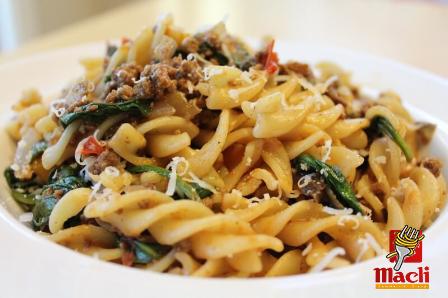 One such dish is Pasta alla Gricia, a simple yet flavorful pasta dish hailing from the Lazio region of Italy. Made with just a few ingredients such as guanciale, pecorino cheese, and black pepper, Pasta alla Gricia highlights the robust flavor of the bucchini pasta while allowing the rich and savory sauce to shine. For those looking to explore more adventurous flavor combinations, bucchini pasta can also be used in fusion dishes that bring together the best of Italian and other international cuisines. Whether it’s a spicy arrabbiata sauce infused with Asian spices or a creamy carbonara with a touch of Middle Eastern flavors, bucchini pasta offers a blank canvas for culinary creativity and experimentation. When it comes to cooking bucchini pasta, it is important to follow a few key steps to ensure that it turns out perfectly every time. Start by bringing a large pot of salted water to a boil, then add the pasta and cook it according to the package instructions until it is al dente. Be sure not to overcook the pasta, as bucchini tastes best when it still has a slight bite to it. Once the pasta is cooked, reserve a cup of the pasta cooking water before draining it. This starchy water can help to thicken and emulsify the sauce later on. For the sauce, heat a skillet over medium heat and add your choice of ingredients such as olive oil, garlic, onions, tomatoes, or any other sauce components you prefer. Toss the cooked bucchini pasta in the sauce, adding a splash of the reserved pasta water as needed to create a silky and well-coated dish. To elevate the flavors of your bucchini pasta dish, consider adding fresh herbs like basil, parsley, or thyme, as well as a generous grating of Parmesan or Pecorino cheese for a salty and savory finish. A drizzle of good quality extra virgin olive oil on top can also enhance the overall taste and mouthfeel of the dish, adding a fruity and peppery note to complement the pasta and sauce. In conclusion, bucchini pasta is a versatile and delicious ingredient that deserves a place in every pasta lover’s pantry. Its unique shape, texture, and ability to hold sauces make it a standout choice for a wide range of dishes, from traditional Italian classics to modern fusion creations. Whether you enjoy it with a simple tomato sauce or get creative with your culinary experiments, bucchini pasta is sure to delight your taste buds and bring a touch of Italy to your dining table. The beauty of bucatini pasta lies in its simplicity and versatility. Its long, hollow shape adds an element of fun and intrigue to any pasta dish, making it a favorite among both home cooks and professional chefs alike.
One such dish is Pasta alla Gricia, a simple yet flavorful pasta dish hailing from the Lazio region of Italy. Made with just a few ingredients such as guanciale, pecorino cheese, and black pepper, Pasta alla Gricia highlights the robust flavor of the bucchini pasta while allowing the rich and savory sauce to shine. For those looking to explore more adventurous flavor combinations, bucchini pasta can also be used in fusion dishes that bring together the best of Italian and other international cuisines. Whether it’s a spicy arrabbiata sauce infused with Asian spices or a creamy carbonara with a touch of Middle Eastern flavors, bucchini pasta offers a blank canvas for culinary creativity and experimentation. When it comes to cooking bucchini pasta, it is important to follow a few key steps to ensure that it turns out perfectly every time. Start by bringing a large pot of salted water to a boil, then add the pasta and cook it according to the package instructions until it is al dente. Be sure not to overcook the pasta, as bucchini tastes best when it still has a slight bite to it. Once the pasta is cooked, reserve a cup of the pasta cooking water before draining it. This starchy water can help to thicken and emulsify the sauce later on. For the sauce, heat a skillet over medium heat and add your choice of ingredients such as olive oil, garlic, onions, tomatoes, or any other sauce components you prefer. Toss the cooked bucchini pasta in the sauce, adding a splash of the reserved pasta water as needed to create a silky and well-coated dish. To elevate the flavors of your bucchini pasta dish, consider adding fresh herbs like basil, parsley, or thyme, as well as a generous grating of Parmesan or Pecorino cheese for a salty and savory finish. A drizzle of good quality extra virgin olive oil on top can also enhance the overall taste and mouthfeel of the dish, adding a fruity and peppery note to complement the pasta and sauce. In conclusion, bucchini pasta is a versatile and delicious ingredient that deserves a place in every pasta lover’s pantry. Its unique shape, texture, and ability to hold sauces make it a standout choice for a wide range of dishes, from traditional Italian classics to modern fusion creations. Whether you enjoy it with a simple tomato sauce or get creative with your culinary experiments, bucchini pasta is sure to delight your taste buds and bring a touch of Italy to your dining table. The beauty of bucatini pasta lies in its simplicity and versatility. Its long, hollow shape adds an element of fun and intrigue to any pasta dish, making it a favorite among both home cooks and professional chefs alike.
…
 The way the sauce clings to the pasta strands and gets trapped within the hollow center creates a symphony of flavors and textures that is truly irresistible. One of the remarkable characteristics of bucatini pasta is its ability to stand up to robust and hearty sauces. Its firm texture can handle the weight of rich meat-based ragus, creamy carbonaras, or spicy arrabbiatas without becoming mushy or losing its shape. This makes bucatini an ideal choice for dishes that require a pasta with presence, allowing the sauce to coat each strand evenly and deliver a burst of flavor with every bite. Bucatini pasta is also a great canvas for showcasing fresh and seasonal ingredients. From roasted vegetables to grilled meats to seafood, the neutral flavor profile of bucatini allows the accompanying ingredients to shine. A simple sauté of cherry tomatoes, garlic, and basil can elevate a bowl of bucatini to a light and refreshing summer pasta dish, while a hearty mix of wild mushrooms and truffle oil can turn it into a decadent and comforting winter meal. For those looking to add a touch of elegance to their pasta creations, bucatini can be used in gourmet dishes that combine high-quality ingredients with innovative cooking techniques. Imagine a dish of bucatini with creamy burrata, prosciutto di Parma, and a drizzle of aged balsamic vinegar, showcasing the best of Italian flavors in a refined and sophisticated presentation. Or perhaps a dish of bucatini with lobster, saffron, and a touch of cream, bringing together the indulgence of seafood with the richness of a luxurious sauce. When it comes to serving bucatini pasta, presentation can make all the difference. Consider twirling the strands of pasta onto a fork using a spoon, creating a nest-like shape that adds visual appeal to the dish. Garnish the pasta with a sprinkle of fresh herbs, a dusting of grated cheese, or a drizzle of high-quality olive oil to add the finishing touch and elevate the dish to restaurant-worthy status. In conclusion, bucatini pasta is a culinary gem that deserves a place of honor in any kitchen. Its unique shape, versatile nature, and ability to enhance a wide range of flavors and ingredients make it a beloved staple in Italian cuisine and beyond. Whether you prefer classic pasta dishes or enjoy experimenting with new and creative recipes, bucatini pasta is sure to impress with its delicious taste and delightful texture. So next time you are browsing the pasta aisle, consider picking up a package of bucatini and embark on a culinary journey that will delight your taste buds and elevate your dining experience to new heights.
The way the sauce clings to the pasta strands and gets trapped within the hollow center creates a symphony of flavors and textures that is truly irresistible. One of the remarkable characteristics of bucatini pasta is its ability to stand up to robust and hearty sauces. Its firm texture can handle the weight of rich meat-based ragus, creamy carbonaras, or spicy arrabbiatas without becoming mushy or losing its shape. This makes bucatini an ideal choice for dishes that require a pasta with presence, allowing the sauce to coat each strand evenly and deliver a burst of flavor with every bite. Bucatini pasta is also a great canvas for showcasing fresh and seasonal ingredients. From roasted vegetables to grilled meats to seafood, the neutral flavor profile of bucatini allows the accompanying ingredients to shine. A simple sauté of cherry tomatoes, garlic, and basil can elevate a bowl of bucatini to a light and refreshing summer pasta dish, while a hearty mix of wild mushrooms and truffle oil can turn it into a decadent and comforting winter meal. For those looking to add a touch of elegance to their pasta creations, bucatini can be used in gourmet dishes that combine high-quality ingredients with innovative cooking techniques. Imagine a dish of bucatini with creamy burrata, prosciutto di Parma, and a drizzle of aged balsamic vinegar, showcasing the best of Italian flavors in a refined and sophisticated presentation. Or perhaps a dish of bucatini with lobster, saffron, and a touch of cream, bringing together the indulgence of seafood with the richness of a luxurious sauce. When it comes to serving bucatini pasta, presentation can make all the difference. Consider twirling the strands of pasta onto a fork using a spoon, creating a nest-like shape that adds visual appeal to the dish. Garnish the pasta with a sprinkle of fresh herbs, a dusting of grated cheese, or a drizzle of high-quality olive oil to add the finishing touch and elevate the dish to restaurant-worthy status. In conclusion, bucatini pasta is a culinary gem that deserves a place of honor in any kitchen. Its unique shape, versatile nature, and ability to enhance a wide range of flavors and ingredients make it a beloved staple in Italian cuisine and beyond. Whether you prefer classic pasta dishes or enjoy experimenting with new and creative recipes, bucatini pasta is sure to impress with its delicious taste and delightful texture. So next time you are browsing the pasta aisle, consider picking up a package of bucatini and embark on a culinary journey that will delight your taste buds and elevate your dining experience to new heights.


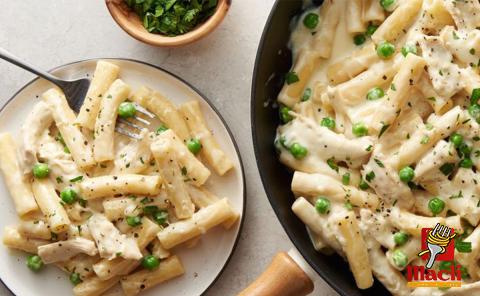



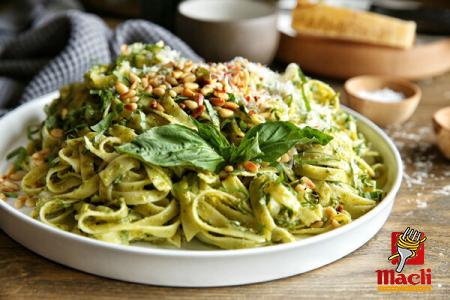
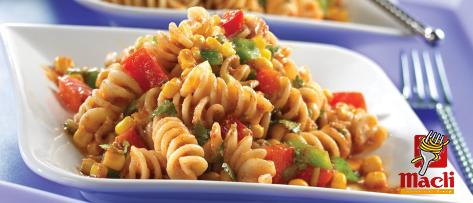
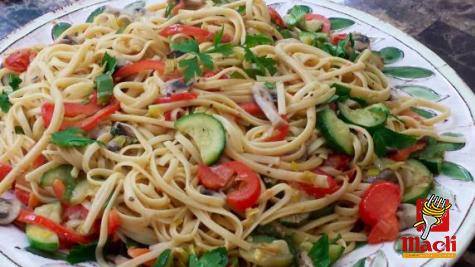
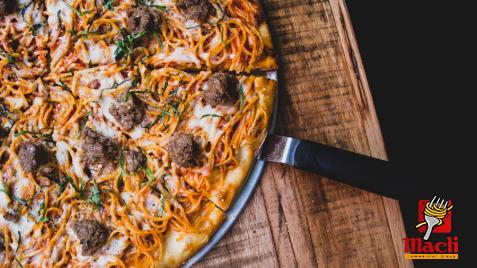
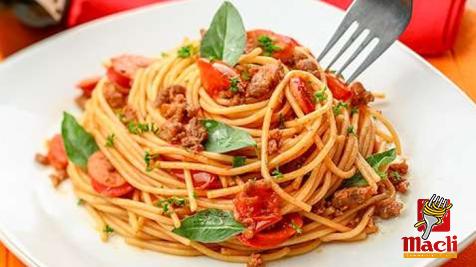
Your comment submitted.